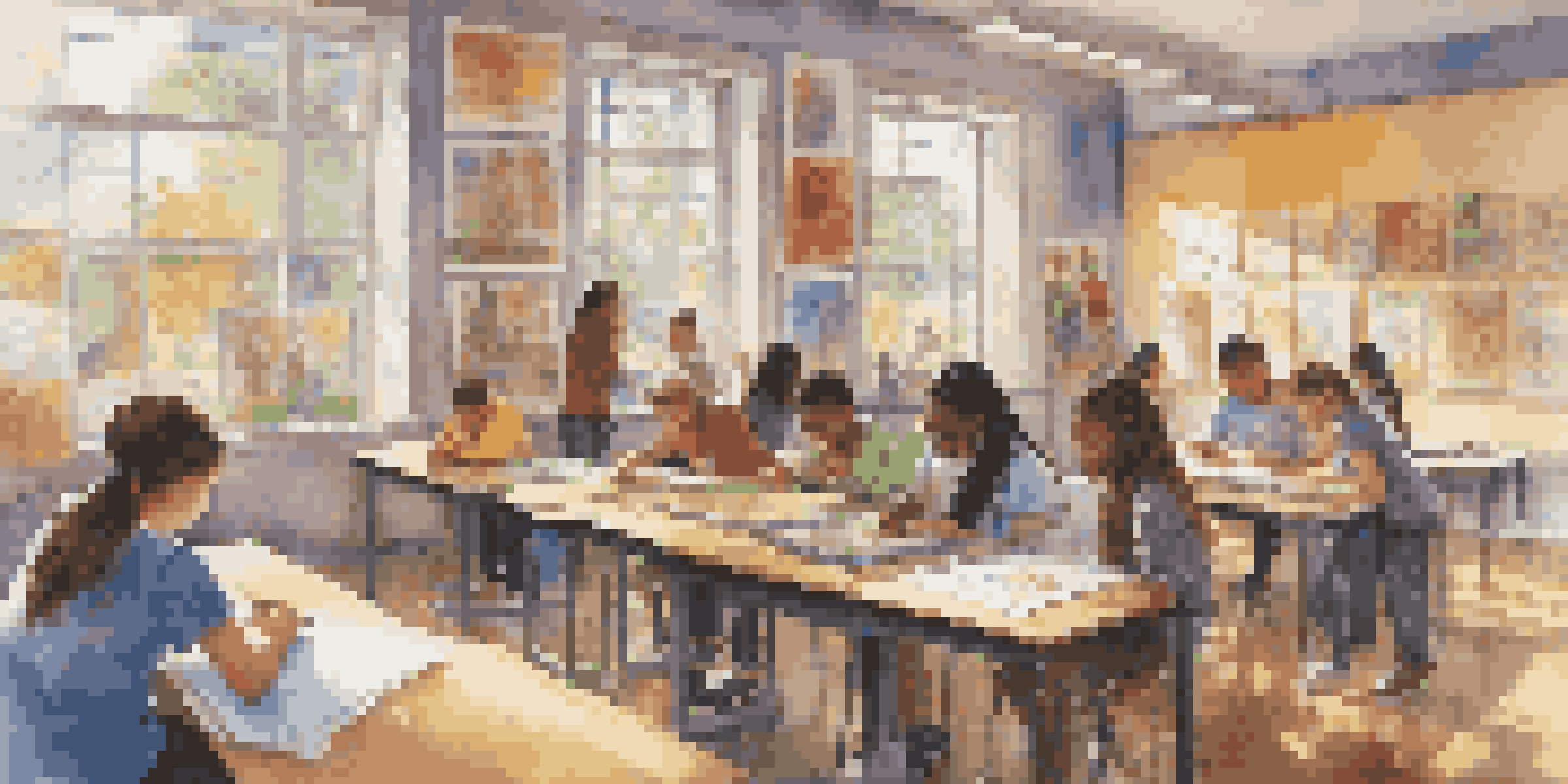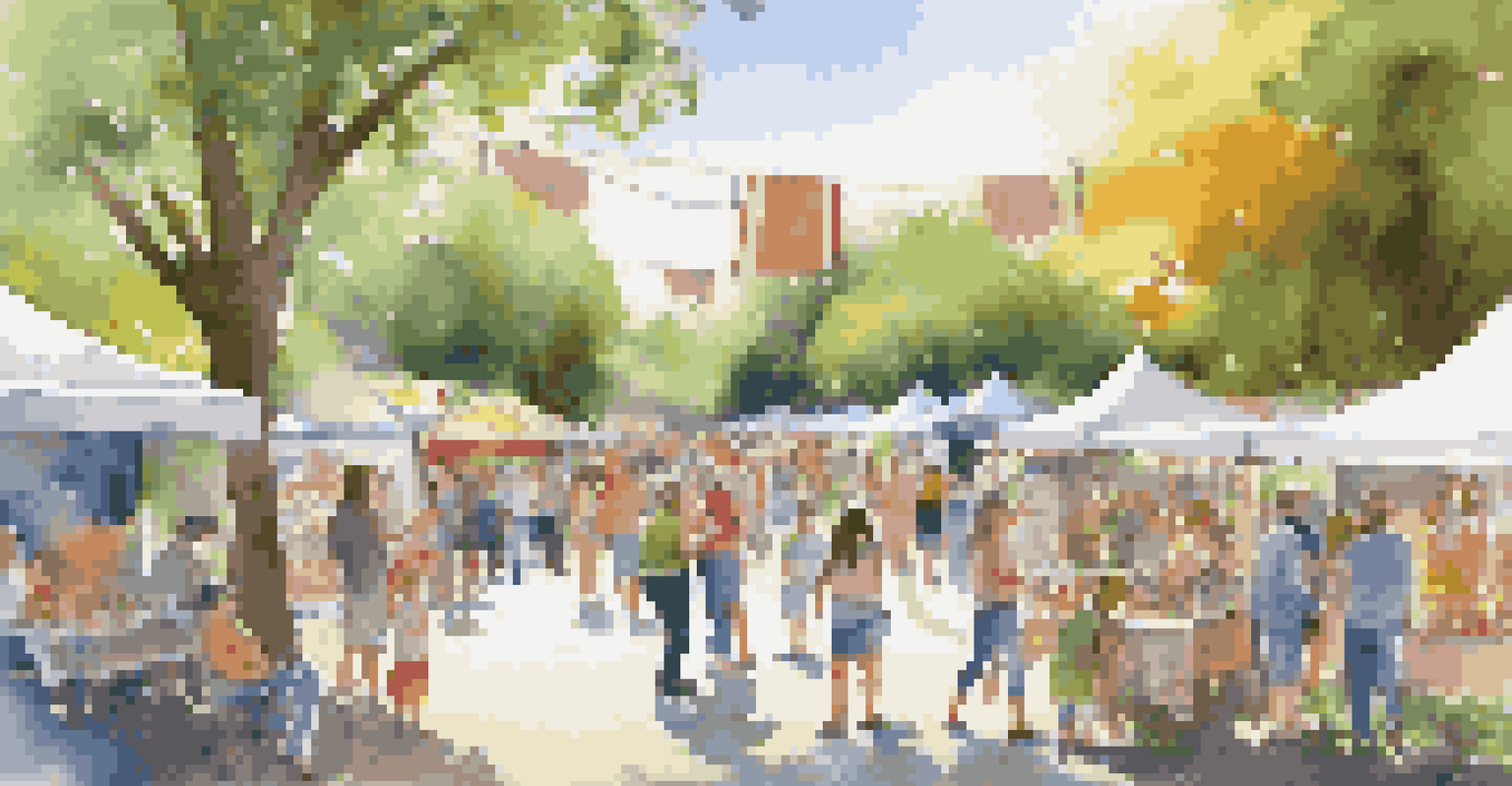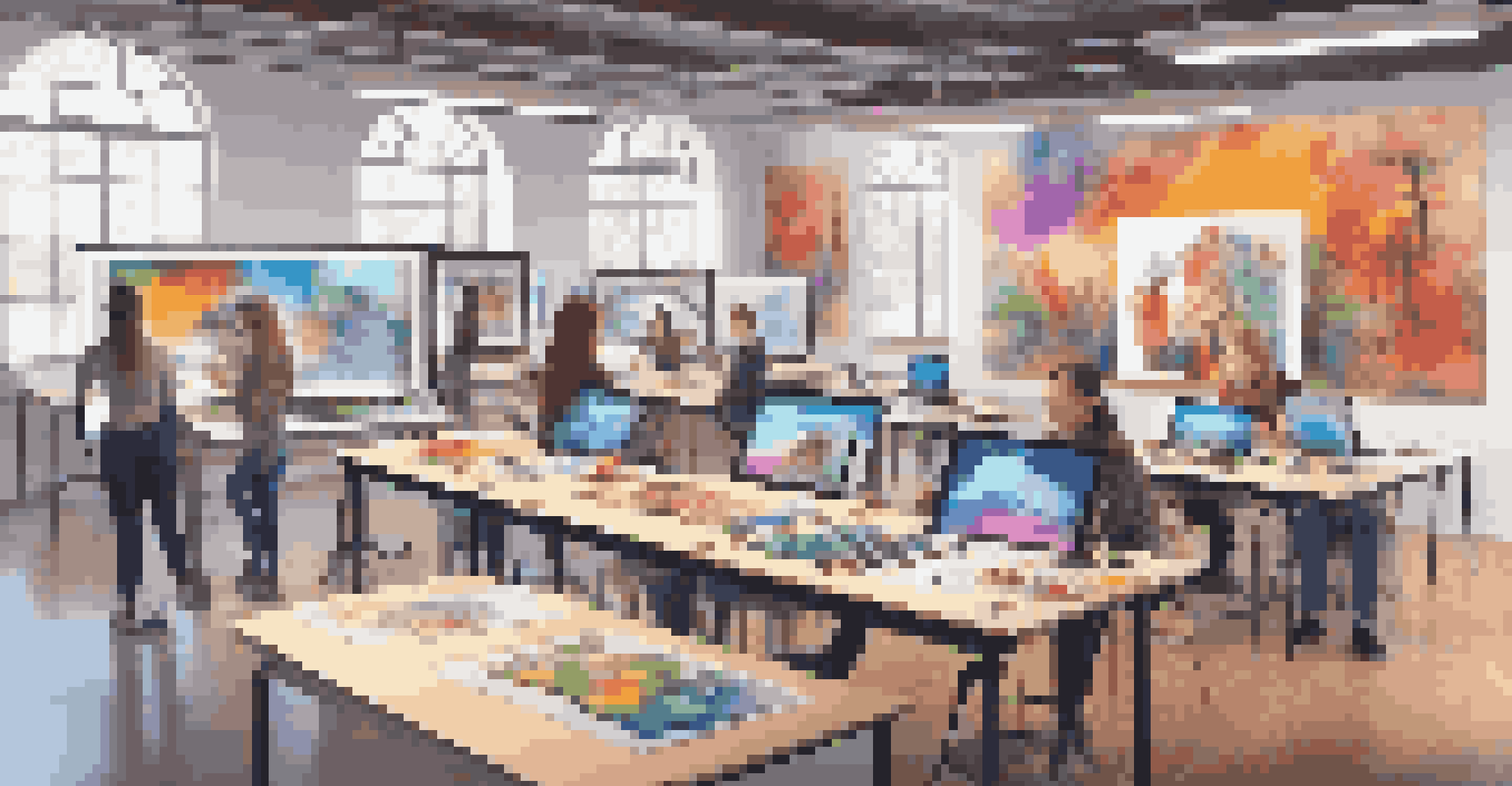Art, Education, and Public Policy: A Collaborative Future

Understanding the Role of Art in Education
Art has long been recognized as a vital component of education, enhancing creativity and critical thinking. Through various forms of expression, students can explore their identities and communicate complex ideas. This engagement not only enriches their learning experience but also fosters a sense of community and belonging within the classroom.
Art is not a thing; it is a way.
Moreover, integrating art into education can lead to improved academic performance across subjects. Research has shown that students involved in arts education tend to score higher on standardized tests and develop better problem-solving skills. This correlation underscores the importance of including artistic disciplines in school curriculums as a means to bolster overall educational outcomes.
In essence, art serves as a bridge that connects students with diverse cultures and perspectives. It nurtures empathy and understanding, which are crucial skills in today's global society. By prioritizing art in education, we prepare students to engage thoughtfully with the world around them.
The Impact of Public Policy on Arts Education
Public policy plays a crucial role in shaping the landscape of arts education. Government initiatives and funding can either bolster or hinder access to art programs in schools. For instance, policies that allocate resources for arts education can lead to the development of innovative programs that inspire and engage students.

On the other hand, budget cuts and a lack of prioritization for the arts often result in diminished opportunities for students. This not only limits their exposure to artistic disciplines but also stifles creativity and self-expression. Thus, advocates for arts education must actively engage with policymakers to communicate the value of these programs.
Art Enhances Learning Experience
Integrating art into education fosters creativity and critical thinking, enriching students' learning experiences.
Ultimately, fostering an environment where arts education is valued requires collaboration between educators, artists, and policymakers. By working together, stakeholders can create policies that support the integration of arts into the educational framework, ensuring that every student has the chance to explore their creative potential.
Collaborative Models for Arts Education
Innovative collaborative models are emerging that merge art, education, and public policy. These models often involve partnerships between schools, local artists, and community organizations. Such collaborations create a rich tapestry of resources and opportunities for students, allowing them to engage with the arts in meaningful ways.
Creativity takes courage.
For example, community art projects or artist-in-residence programs can provide students with hands-on experiences that enhance their learning. These initiatives not only enrich the educational environment but also help students develop a sense of ownership and pride in their community. When students see the tangible impact of their artistic contributions, it fosters a deeper connection to both their education and their surroundings.
Moreover, these collaborative efforts can serve as a model for other regions looking to enhance their arts education programs. By sharing success stories and best practices, communities can inspire one another to create similar partnerships, ultimately leading to a broader cultural shift that values and prioritizes arts education.
Bridging the Gap Between Art and Policy
To bridge the gap between art and public policy, it's essential to foster open dialogue among stakeholders. Artists, educators, and policymakers must come together to discuss the importance of arts education and advocate for its inclusion in public policy. This collaborative dialogue can lead to a shared vision that prioritizes creativity and innovation in the educational landscape.
One effective approach is to engage policymakers through workshops or forums that showcase the benefits of arts education. By presenting case studies, statistics, and personal stories from students and teachers, advocates can highlight the transformative power of art in education. Such engagement can help to humanize the policy process and illustrate the real-world implications of decisions made in legislative chambers.
Policy Shapes Arts Education Access
Public policy significantly influences the availability of arts education, affecting students' opportunities for creative expression.
Ultimately, creating a collaborative future requires persistent advocacy and relationship-building. By establishing trust and understanding among all parties, we can work towards policies that not only support but also celebrate the role of art in education.
The Role of Technology in Arts Education
As technology continues to evolve, it presents unique opportunities to enhance arts education. Digital tools and platforms can provide students with new avenues for creative expression and collaboration. For instance, virtual art studios and online galleries allow students to showcase their work to a broader audience, breaking down geographical barriers.
Additionally, technology can facilitate access to high-quality arts education resources. Online learning platforms and educational apps can provide students with tutorials, critiques, and mentorship from professional artists. This democratization of resources ensures that all students, regardless of their background, have the opportunity to engage with the arts.
However, it's crucial to balance technology with traditional artistic practices. While digital tools can enhance learning, hands-on experiences with materials and techniques remain essential. By combining both approaches, we can create a well-rounded arts education that prepares students for a diverse range of creative endeavors.
Community Engagement and Arts Education
Community engagement is vital for sustaining arts education initiatives. By involving local organizations, businesses, and artists, schools can create a supportive ecosystem that nurtures creativity. This collaboration not only enriches the educational experience but also strengthens community ties.
For instance, local galleries or theaters can partner with schools to provide students with opportunities for internships and mentorships. These real-world experiences allow students to see the practical applications of their artistic skills while fostering a sense of belonging within their community. When students feel connected to their local culture, they are more likely to engage with and contribute to it.
Community Collaboration is Key
Engaging local organizations and artists strengthens arts education initiatives and fosters a sense of belonging among students.
In addition, community events such as art fairs or exhibitions can showcase student work and celebrate their achievements. These events not only motivate students but also raise awareness about the importance of arts education among community members. By rallying support for arts initiatives, we can create a vibrant cultural landscape that benefits everyone.
Looking Ahead: The Future of Arts Education
As we look to the future, the need for robust arts education is more pressing than ever. The challenges of the modern world require creative thinkers who can approach problems from multiple perspectives. By prioritizing arts education, we are investing in the next generation of innovators and leaders.
However, achieving this vision will require ongoing commitment from all stakeholders. Educators, policymakers, artists, and community members must continue to advocate for the importance of arts in education. This collective effort will ensure that arts programs receive the funding and support they need to thrive.

Ultimately, the future of arts education hinges on collaboration, creativity, and a shared belief in the transformative power of art. By working together, we can create an educational landscape that nurtures creativity and fosters a love for the arts, benefiting individuals and society as a whole.